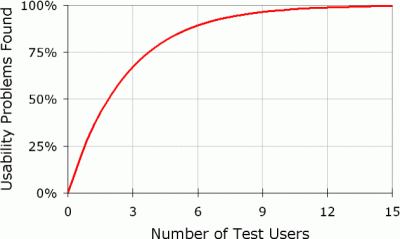Reflection #6 – Eye Tracking
As the end of the course approaches, we focus on eyetracking usability. This is a methodology I’ve always thought was really interesting to try to use for a couple of reasons:
- When you watch enough usability sessions, it’s easy to wonder if a user is seeing what is on the page
- The output of gaze plots and heat maps can be interesting to analyze and use for presentations
However, after reading about how to conduct a study like this (“Eyetracking Web Usability” by Nielsen and Pernice is a good resource in this regard) it is clear that costs can be high for equipment, set-up, participant incentives and time to analyze the data is greater than most other usability methodologies. Additionally, this methodology is prone to errors since participants can’t move their head and the equipment can have a hard time calibrating to a participant’s gaze. Eyetracking is more valuable when standard usability testing is done enough so that a majority of issues are uncovered and fixed; at that point, the eyetracking data can be a nice supplement to find other usability concerns.
At my first job, we had a Tobii eye tracking machine but it was only used for one or two projects in my time there. The system worked well, but clients did not feel that the methodology was necessary to learn about the interface. Even at Vistaprint, we have discussed the idea of using eyetracking for various projects. The interesting part is that we can usually determine if a participant sees something in the interface or not by designing tasks that focus on specific functionality of parts of the site. At some points we ask a participant if they saw a particular item, and when they say no we tell them to look for it on the page (sometimes it’s right in front of them or over where their mouse is) and they still don’t see it! With further prodding we find out that the biggest issues lie with relevancy and user goals. If the part of the interface we are testing isn’t compatible with a user’s goals, or it isn’t relevant to what they are trying to do, they will not notice it or ignore it completely. Sometimes the issue can be that the user is so focused on their task that they don’t see anything else; the idea of selective attention applies to the web, but it is also demonstrated in this fun video involving some basketball players.
Eyetracking may help determine if a user actually didn’t see these interface elements on the site, or if they did gaze at them but did not fixate on the elements long enough to register in their brain. But first, it’s important to determine if the user’s goals and expectations align with the functions of the site and address those problems first. For the final week of Usability II, I’ll write a brief review of “Selling Usability: User Experience Infiltration Tactics” in terms of getting people to buy in to user experience and research.

